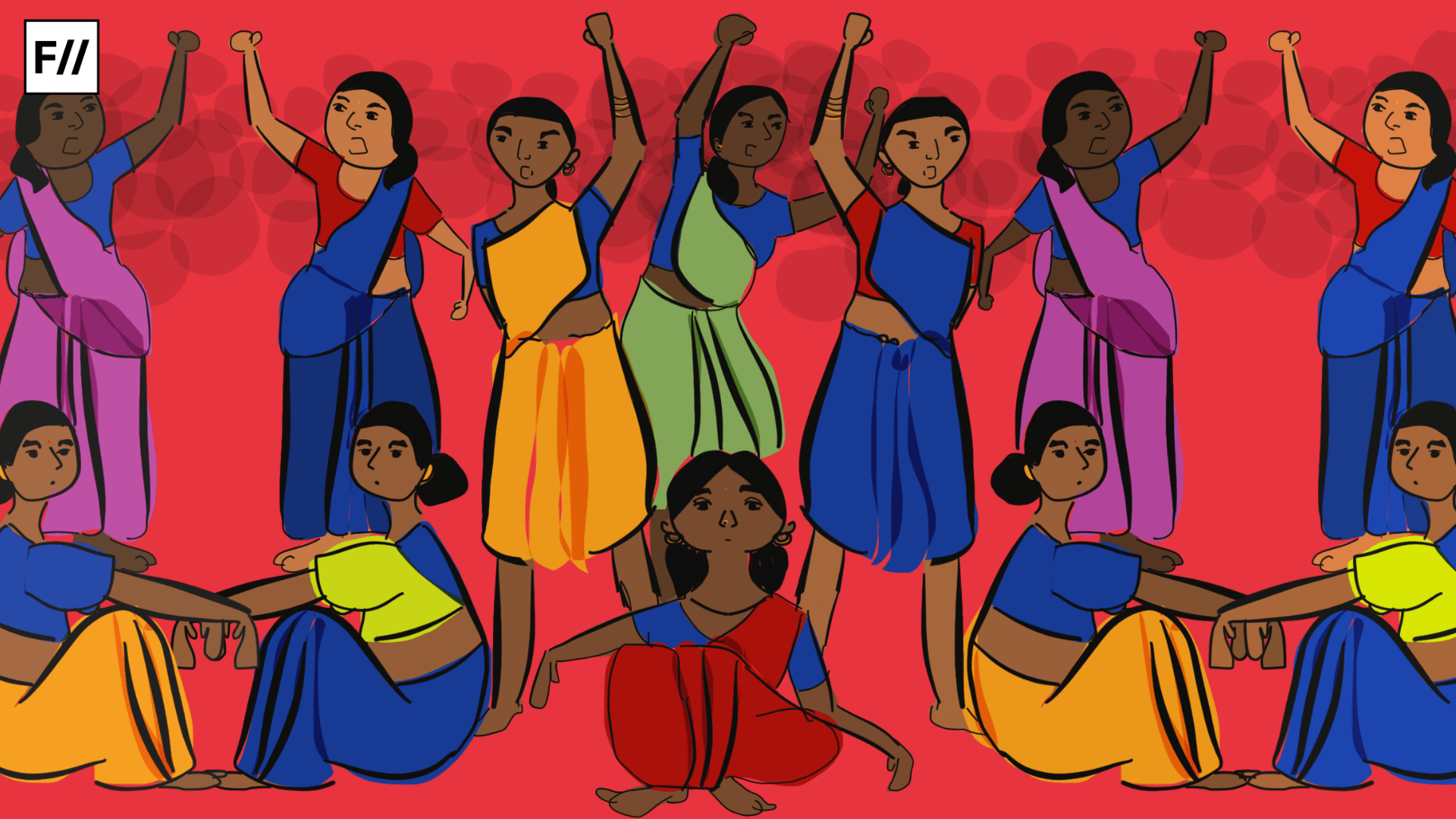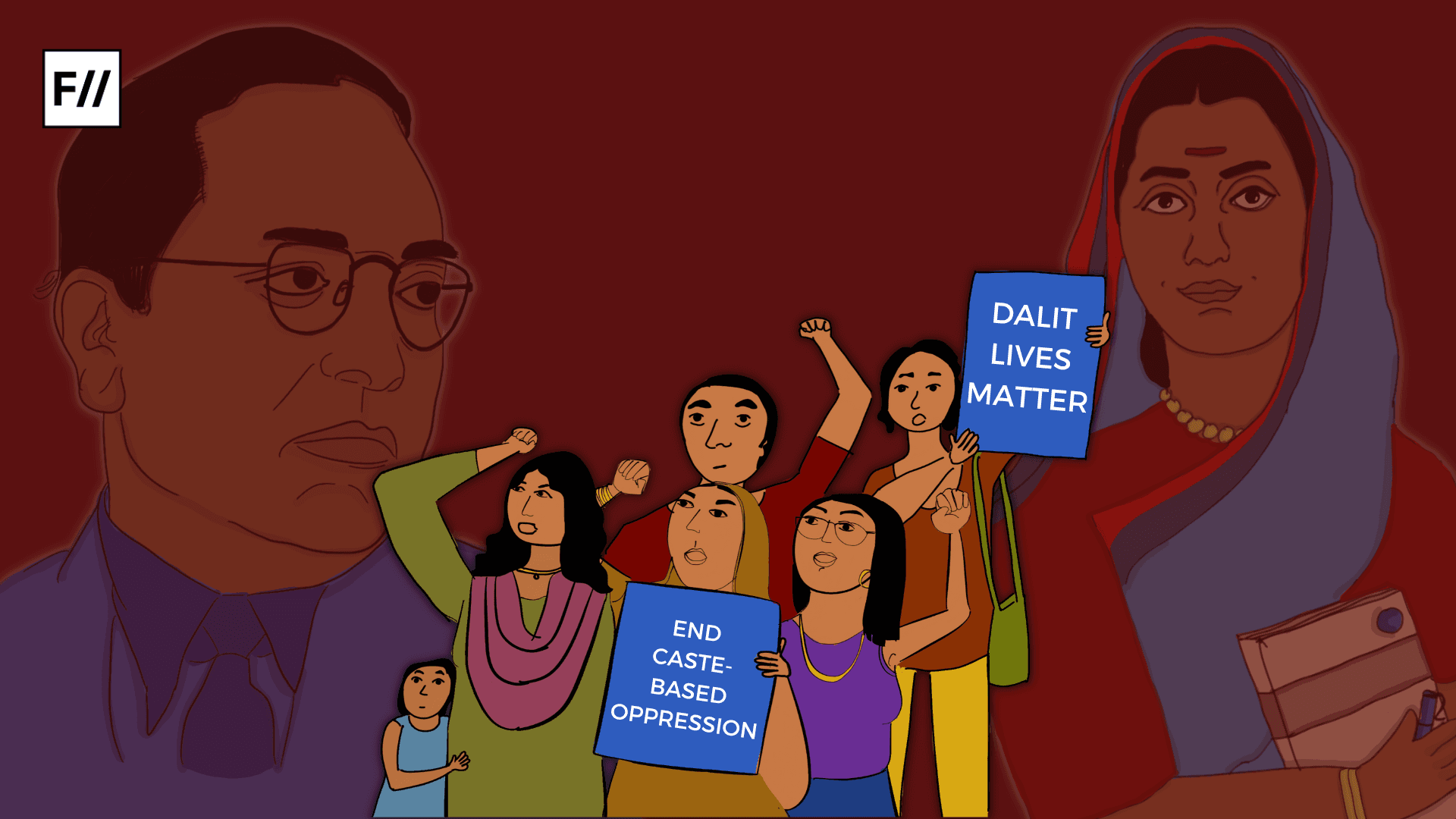Trigger Warning: Caste Based Assault and Abuse
On 29th September, 2006 in the Khairlanji village of Maharashtra, four members of the Bhotmange family—mother Surekha, daughter Priyanka (19), son Sudhir (17) and other son Roshan (18) who was visually challenged, were pulled out of their home after some women from OBC/Peasant families burst open their doors, which eventually led to the infamous Khairlanji Massacre against Dalits. They were brought to the center of the village and tied to a bullock cart, and were stripped and beaten. Their genitals were injured.
The sons were asked to gang-rape their mother and sister in front of the entire village to which they refused. They were subsequently mutilated. Four of them died on the spot and their bodies were dumped in a nearby canal. Bhaiyyalal Bhotmange who was the lone survivor of the family tried to inform people of nearby village but no body came to rescue. The Dalit families of the village realized what has just happened, but didn’t come out of the fear.
Caste is a living reality in India. People are stripped, paraded naked, made to eat shit, killed in the task of sewage cleaning, gang raped and murdered by the virtue of the belief that people born in lower castes are destined to this fate and have no agency of their own lives, bodies and work. They are not allowed to speak, to mourn over the death of their loved ones, to speak of the discrimination they face, to educate, to organise, to agitate and take what is rightfully theirs.
The family agreed to allow 15 feet of land for a road but the entire village which was dominated by OBC caste groups of Kalar, Powar and Kunbi, could never come to terms with the fact that these two Dalit families have risen economically, educationally and have began the task of self asserting.
It is believed that the family had a conflict with the neighborhood as their neighbor wanted to get access to their own land through the land of Bhotmange family, of which they didn’t approve. The conflict was mediated by Gajbhiye who was also a Dalit but was well off, and he employed people of OBC caste group to work on his field. The family agreed to allow 15 feet of land for a road but the entire village which was dominated by OBC caste groups of Kalar, Powar and Kunbi, could never come to terms with the fact that these two Dalit families have risen economically, educationally and have began the task of self asserting.
Subsequently on 3rd September, Gajbhiye was beaten up over the dispute of agricultural wages and was abused by casteist slurs. He went to file a complaint but was chased away. Finally, Surekha stood witness to the attack. But the accused came out on bail on 29th September, and began chasing Gajbhiye. When they couldn’t find him they resorted to killing Surekha followed by her children. The attitude of the police was casual and was hardly willing to start the investigation. Evidences were fudged and misinformation spread. The character of Surekha was maligned to justify the murder.
It was in November that the protests by the masses started and all the misinformation was exposed. The first protest happened in Bhandara which was 1000 strong morcha organised by Dalit women’s front, Samrudha Baudha Mahila Sangathan. In Nagpur, various symbols of the government and police were targeted. There were no organized forces behind the agitation.
It was the revolutionary potential of the masses that was boiling with rage that made spontaneous mass protests happen one after the another. The long march to Khairlanji was thwarted by the police and the state repression grew stronger. On 8th November, about 50 women from various Dalit organisations, including Urmila Pawar stormed the CM’s office demanding justice. On the 14th, about 20,000 people marched responding to the protest call where a Dalit was martyred as police fired at him. The agitation spread all over and there was no stepping back.
Also read: #DalitHistoryMonth2019 Event: An Evening Of Remembrance, Resistance And Resilience
The verdict was announced by the Bhandara Court in 2008, it held 8 people guilty of murder and acquitted three. Six people were awarded the death sentence while other two were given life imprisonment. The ruling was appealed to the Nagpur division bench of Bombay High Court. The court commuted the death penalty to six convicted to a 25-year imprisonment jail sentence. The court refused to invoke The Scheduled Caste and Tribes (Prevention of Atrocities) Act, 1989 and held that the murder was based on revenge and the caste was not at work here.
The verdict was announced by the Bhandara Court in 2008, It held 8 people guilty of murder and acquitted three. Six people were awarded the death sentence while other two were given life imprisonment. The ruling was appealed to the Nagpur division bench of Bombay high court.
This judgement led to huge protests by local scheduled caste organisations and the lone survivor, Bhaiyalal. Bhaiyalal died on 20th Jan, 2017 and the case is pending before the Supreme Court of India. The institutional denial and invisibilisation of the question of caste does not cease to take place. Be it the institutional murder of Rohith Vemula or Dr. Payal Tadvi, the state remains in constant denial of the fact that Brahmanism is taking lives of lower caste people in houses they live, fields they work and educational institutions that they have gone to study in. Khairlanji Massacre will continue to haunt us, makes us question where do we stand as a community and continue to ignite fire in masses to fight back, to take to the streets and to continue working for Babasaheb’s dream of social justice.
Reference
Featured Image: Ritika Banerjee for Feminism in India
About the author(s)
Shivangi is a second year student at Hindu college who is interested in literature, politics and culture. For her, the revolution will be feminist or it won't be.





No matter how relevant or precise it sounds, I don’t think the quote at the end of the post is from Dr. Ambedkar. Can you provide the source, please?
Hello, the quote is from Annihilation of Caste. Source: http://laser.crusaders.juggernaut.in/books/annihilation-caste-annotated-critical-edition1
Thanks for the reply but those words are not from Dr Ambedkar but Arundhati Roy.
These words don’t appear in original AoC.
Thank you for flagging this. We will edit the article accordingly.
Unfairness done to anybody is diplorable but there is no need to needlessly and meaninglessly drag in the word brahmanical. That is misleading and discriminatory. How would people like it if every act of terrorism gets labelled islamic?